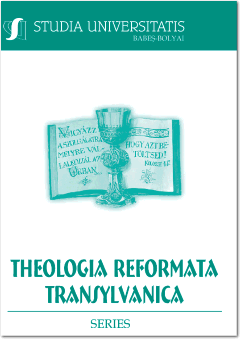AZ ERDÉLYI MAGYAR EGYHÁZAK KISEBBSÉGI SORSBÓL ADÓDÓ ÖSSZEFOGÁSA AZ 1918-AT KÖVETŐ KORSZAKBAN MINT TÖRTÉNELMI MEGBÉKÉLÉSI FORMA
THE UNITY OF THE HUNGARIAN CHURCHES IN TRANSYLVANIA ARISING FROM THEIR MINORITY STATUS, IN THE PERIOD AFTER 1918, AS A FORM OF HISTORICAL RECONCILIATION
Author(s): Olga LukácsSubject(s): History of Church(es), Biblical studies, Systematic Theology, Pastoral Theology
Published by: Studia Universitatis Babes-Bolyai
Keywords: Protestant Churches; minority situation; denominational conflicts; Hungarian churches in Transylvania; Transylvanian ecclesiastical rapprochement;
Summary/Abstract: The Unity of the Hungarian Churches in Transylvania Arising from their Mi-nority Status, in the Period after 1918, as a Form of Historical Reconciliation. In the Transylvania belonging to Greater Romania, the Hungarian churches, which came to be in a minority situation, did not have the opportunity to discuss the wounds inflicted on each other in previous centuries, for which they were not pre-pared anyway. Thus, putting aside the tension, pain, rivalries, destructive measures, denominational conflicts that stretched over the centuries, clinging to the strength and protective power of their identity, they formed a common front against the new state power.The first part of the study gives an overview of the Hungarian churches in Transylvania, presenting some of the most important historical events between the two World Wars. Following the unification of 1918, the Catholic Church and the Protestant Churches established a permanent deliberative and decision-making body, the Interfaith Council (1920). Due to their minority status, the churches were forced to cooperate in the field of education policy, regarding denominational schools, and for acquiring political rights and preserving their cultural identity. Co-operation was necessary due to various state laws, including the Land Reform (1919–1922), the Education Acts (1924, 1925), the Cult Act (1928), and the 1923 and 1938 constitutions, which considered the Orthodox Church to be the ruling church, the Greek Catholic Church to be a national church, while the Ro-man Catholic Church and the Protestant churches were considered recognised de-nominations. The study presents the controversies and defiance regarding the above legislation.As a summary of the presented period, the study states that national self-consciousness and its protection overwrote the previous conflicts and tensions, and that religious affiliation became secondary, thus achieving a special Transylvanian ecclesiastical rapprochement, a “reconciliation”.
Journal: Studia Universitatis Babeș - Bolyai Theologia Reformata Transylvanica
- Issue Year: 65/2020
- Issue No: 1
- Page Range: 11-32
- Page Count: 22
- Language: Hungarian

